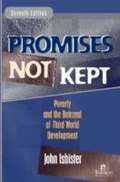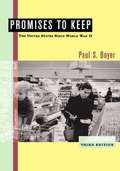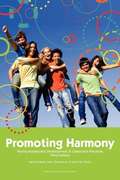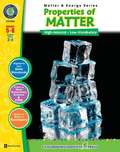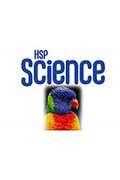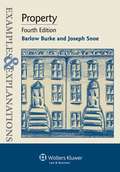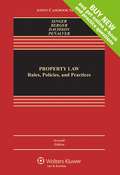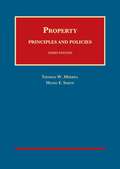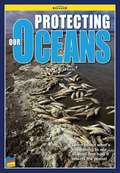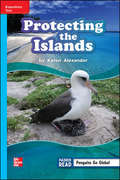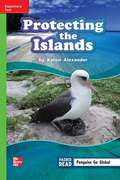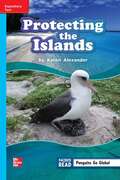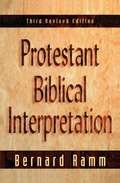- Table View
- List View
Promises Not Kept: Poverty and The Betrayal of Third World Development (Seventh Edition)
by John IsbisterThe seventh edition of this perennial stalwart of the Kumarian Press list continues the discussion of the new American hegemony and the war on terror that began with the previous edition. In particular, Isbister addresses changes in international politics and the impact on the global order of the US-led military operations in Afghanistan and Iraq. The author also focuses on major initiatives, such as the UN’s Millennium Development Goals, to confront the issue of world poverty. As with all editions of this vibrant text, Isbister writes with clarity and passion, not only about failed promises, but about hope, human potential, and the belief that a just and equitable world system is attainable.
Promises of Freedom, Unit 7: Foundations of Freedom
by Wright Group/McGraw-HillNIMAC-sourced textbook
Promises to Keep: The United States Since World War II
by Paul S. BoyerDesigned for the "U.S. Since 1945" course, this comprehensive survey presents the World War II experience as a backdrop for understanding recent developments and events in American history. The text features four principal, interwoven themes: the pervasive impact of the Cold War; the effects of social-protest movements among African Americans, women, and other groups; the sources and impact of economic, demographic, and cultural changes; and a thorough examination of politics.
Promoting Harmony: Young Adolescent Development and Classroom Practices
by David B. Strahan Mark L'Esperance John Van Hoose National Middle School Association StaffPromoting Harmony: Young Adolescent Development and Classroom Practices
Promoting Health and Personal Development, Level One (Grades 3/4)
by Gilbert J. BotvinThis Student Guide will be useful for completing the Life Skills Training program.
Properties of Materials: Investigation Notebook
by The Lawrence Hall of ScienceNIMAC-sourced textbook
Properties of Matter (Matter & Energy)
by George GraybillThis book provides ready-to-use information and activities for remedial students in grades five to eight. Written to grade and using simplified language and vocabulary, science concepts are presented in a way that makes them more accessible to students and easier to understand. Comprised of reading passages, student activities and overhead transparencies, our resource can be used effectively for whole-class, small group and independent work.
Properties of Matter [Grade 5]: Below Level Reader (Science Leveled Readers Ser.)
by Houghton Mifflin Harcourt StaffNIMAC-sourced textbook
Properties of Matter: Student Guide and Source Book
by National Science Resources CenterNIMAC-sourced textbook
Properties of Matter: Student Guide and Source Book
by National Science Resources CenterWhat is the meaning of the term "matter"? In this lesson, you will discuss the different meanings of thius word and how it is used in science. You will also do a circuit of eight inquiries on the properties of matter. These inquiries are designed to get you thinking about what matter is, what its properties are, and how it behaves.
Property (Eighth Edition)
by Jesse DukeminierJesse Dukeminier's trademark wit, passion, and human interest perspective has made Property, now in its Eighth Edition, one of the best--and bestloved--casebooks of all time. A unique blend of authority and good humor, you'll find a moveable feast of visual interest, compelling cases, and timely coverage of contemporary issues. In the Eighth Edition, the authors--along with new co-author Lior Jacob Strahilevitz--have created a thoughtful and thorough revision, true to the spirit of the late Jesse Dukeminier. Features:Thoroughly updated throughout with the expansion of many topics and the introduction of new topics. Extended material on intellectual property with new cases on patents,copyright, and trademarks. New material on exclusion, abandonment, and destruction, with new cases and discussion. Introduction of a comprehensive treatment of the mortgage crisis with new cases and notes on foreclosure, proposals to reform the legal system and proposals to revamp housing finance. etc.
Property (Examples & Explanations): Fourth Edition
by Barlow Burke Joseph SnoeThis book discusses in detail the fundamental definitions, rules, and concepts covered in Property courses.
Property Law: Rules, Policies, And Practices (Aspen Casebook)
by Nestor Davidson Joseph Singer Bethany Berger Eduardo PeñalverThis hugely successful cases-and-problems book is acclaimed for its textual clarity, evenhanded perspective, and contemporary, up-to-date character. Easily distinguished from other property casebooks for its clear descriptions of legal doctrine and its variations; its explanations of the social ramifications of property law; its emphasis on both statutory and regulatory interpretation; its comprehensive treatment of public accommodations and fair housing law, current tribal property issues, and property in human bodies; and its use of the problem method to teach legal reasoning and lawyering skills. Thoroughly updated to reflect significant changes in the law of property, the Seventh Edition incorporates multiple new Supreme Court cases, including: Texas Department of Housing & Community Affairs v. Inclusive Communities Project, Inc., Obergefell v. Hodges, and Reed v. Town of Gilbert, and three decided or pending cases with implications for regulatory takings, Horne v. Dep’t of Agriculture, Marvin M. Brandt Revocable Trust v. United States, and Murr v. State.
Property Management (4th edition)
by Walter Roy Huber Arlette Lyons William H. PivarUnderstanding the use and meanings of the terminology found in this textbook is paramount to a successful career in the real estate property management field.
Property: Principles And Policies
by Henry Smith Thomas Merrill"This revised casebook is designed for a "building block" property course that serves as a student's foundation for the rest of law school and beyond. Avoiding the typical hodge-podge of issues, the book presents material in an integrated way, starting with the central role of exclusive in rem rights in property, and systematically developing elaborations, exceptions, and counterfoils to this idea using vivid cases, both old and new. Timely issues in intellectual property, mortgages, and regulatory takings, as well as traditional topics like equity and restitution, are given expansive treatment. The emphasis throughout is on fundamental principles and policy questions."--Publisher's website.
Protecting Earth's Resources, Unit 2: A Green Future
by Wright Group/McGraw-HillNIMAC-sourced textbook
Protecting Florida's Land and Water: [Approaching Level, Grade 4]
by Lisa MoranNIMAC-sourced textbook
Protecting Our Oceans
by Jeanette LeardiLearn about the marine life that lives in the world's oceans and how people can protect these habitats by keeping the ocean clean.
Protecting the Islands (Reading Wonders #Approaching Level, Grade 3)
by Karen AlexanderNIMAC-sourced textbook
Protestant Biblical Interpretation: A Textbook of Hermeneutics (3rd Revised Edition)
by Bernard RammThe classic introduction to the science and art of biblical interpretation.
